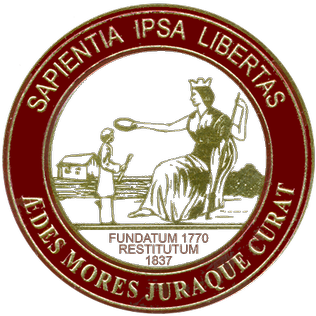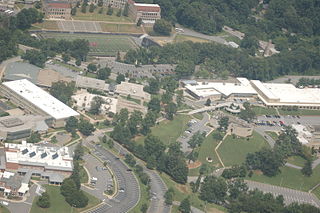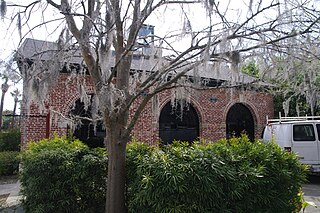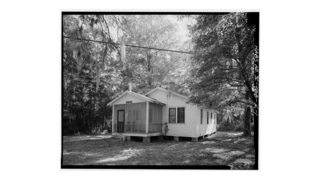
Greensboro College is a private college in Greensboro, North Carolina. It is affiliated with the United Methodist Church and was founded in 1838 by Rev. Peter Doub. The college enrolls about 1,000 students from 32 states, the District of Columbia, and 29 countries.

The College of Charleston is a public university in Charleston, South Carolina. Founded in 1770 and chartered in 1785, it is the oldest university in South Carolina, the 13th-oldest institution of higher learning in the United States, and the oldest municipal college in the nation.

Valley City State University (VCSU) is a public university in Valley City, North Dakota. It is part of the North Dakota University System. Founded in 1890 as Valley City State Normal School, a two-year teachers' college, it was authorized to confer bachelor's degrees in 1921 and changed its name to Valley City State Teachers College. With an expansion in programs outside teacher education after World War II, it became Valley City State College in 1963. In 1986, it was renamed State University of North Dakota-Valley City and a year later received its current name.

Shaw University is a private historically black university in Raleigh, North Carolina. Founded on December 1, 1865, Shaw University is the oldest HBCU to begin offering courses in the Southern United States. The school had its origin in the formation of a theological class of freedmen in the Guion Hotel. The following year it moved to a large wooden building, at the corner of Blount and Cabarrus Streets in Raleigh, where it continued as the Raleigh Institute until 1870. In 1870, the school moved to its current location on the former property of Confederate General Barringer and changed its name to the Shaw Collegiate Institute, in honor of Elijah Shaw. In 1875, the school was officially chartered with the State of North Carolina as Shaw University.

Marycrest College Historic District is located on a bluff overlooking the West End of Davenport, Iowa, United States. The district encompasses the campus of Marycrest College, which was a small, private collegiate institution. The school became Teikyo Marycrest University and finally Marycrest International University after affiliating with a Japanese educational consortium during the 1990s. The school closed in 2002 because of financial shortcomings. The campus has been listed on the Davenport Register of Historic Properties and on the National Register of Historic Places since 2004. At the time of its nomination, the historic district consisted of 13 resources, including six contributing buildings and five non-contributing buildings. Two of the buildings were already individually listed on the National Register.

Benedict College is a private historically black college in Columbia, South Carolina. Founded in 1870 by northern Baptists, it was originally a teachers' college. It has since expanded to offer majors in many disciplines across the liberal arts. The campus includes buildings in the Benedict College Historic District, a historic area listed on the National Register of Historic Places.

Penn State Abington is a commonwealth campus of the Pennsylvania State University located in Abington, Pennsylvania. The campus is set on 45 acres (180,000 m2) of wooded land. The roughly 4000 undergraduate students are taught by a full-time staff of over 150 professors and teaching assistants.

Penn State Hazleton is a commonwealth campus of the Pennsylvania State University located in Sugarloaf Township, Pennsylvania. It has an enrollment of 426 students as of 2021.

Penn State Mont Alto is a residential commonwealth campus of the Pennsylvania State University. Located in Mont Alto, Pennsylvania, the campus offers nine four-year and seven two-year degree programs, including nursing, forest technology, occupational therapy assistant, physical therapist assistant, business, information technology, and project and supply chain management.

Penn State Shenango is a commonwealth campus of the Pennsylvania State University that is located in Sharon, Pennsylvania. Penn State Shenango is the only urban campus in the Penn State system, although some parts of Penn State Altoona that are located in the heart of Altoona's downtown are urban in nature.
The Alice Freeman Palmer Memorial Institute, better known as Palmer Memorial Institute, was a school for upper-class African Americans. It was founded in 1902 by Dr. Charlotte Hawkins Brown at Sedalia, North Carolina near Greensboro. The institute was named after Alice Freeman Palmer, former president of Wellesley College and benefactor of Dr. Brown.

State College Area High School, often referred to locally as "State High," is a public high school in State College, Pennsylvania, United States. It is the only public high school in the State College Area School District and is within walking distance of Penn State University. It is 5 minutes away from Mount Nittany Middle School, and 10 minutes away from Park Forest Middle School.

Asheville–Buncombe Technical Community College is a public community college in Asheville, North Carolina. Established in 1959, the college is one of the oldest in the North Carolina Community College System and serves Buncombe and Madison counties across five different campuses, although students from anywhere may enroll. As of the 2014–15 school year, the curriculum enrollment was 10,070 and continuing education enrollment was 14,053 students. As of 2019–20, the college is the seventh largest in the North Carolina system and the largest in Western North Carolina. A-B Tech offers more than 120 degrees, diplomas, and certificates.
This is an incomplete list of historic properties and districts at United States colleges and universities that are listed on the National Register of Historic Places (NRHP). This includes National Historic Landmarks (NHLs) and other National Register of Historic Places listings. It includes listings at current and former educational institutions.

The Playmakers Theatre, originally Smith Hall, is a historic academic building on the campus of the University of North Carolina at Chapel Hill. Built in 1850, it was designated a National Historic Landmark for its architecture, as an important example of Greek Revival architecture by Alexander Jackson Davis. It is now a secondary venue of the performing company, which is principally located at the Paul Green Theatre in the Joan H. Gillings Center for Dramatic Art.
Frogmore is an unincorporated community on St. Helena Island in Beaufort County, South Carolina, United States, along U.S. Route 21.

The Reconstruction Era National Historical Park, formerly Reconstruction Era National Monument is a United States National Historical Park in Beaufort County, South Carolina established by President Barack Obama in January 2017 to preserve and commemorate activities during the Reconstruction Era that followed the American Civil War. The monument was the first U.S. National Monument dedicated to the Reconstruction Era. The John D. Dingell, Jr. Conservation, Management, and Recreation Act, signed March 12, 2019, by President Donald Trump, re-designated it as a national historical park. It is administered by the National Park Service.

Benezet House, also known as Benezette House, is an historic dormitory located on the campus of Penn Center. It was erected in 1905 and named after Frenchman, Anthony Benezet, who stood for freedom in the mid- and late-1870's. The female teachers and female boarding students of Penn School were housed here. The mandatory nightly chapel service held in the ground floor lobby was, however, open to both male and female students. This location was the focal point of home economics training for female students, each of whom were required to reside in Benezet before they graduated. Today, Benezet House is used to house overnight guests to Penn Center.

The Retreat House and Dock of Penn Center, formerly known as Penn School, was built in 1968, the year Dr. Martin Luther King, Jr. was killed. Plans were for him to have his meetings there rather than the smaller Gantt Cottage he had been staying at. It faces a body of water, a cove of Capers Creek, which is a place for meditation and relaxation for Penn Center's guests. The Retreat House replaced the Palmetto Cottage built in 1920 which was formerly located at this site but was destroyed by fire in the 1950’s. The Retreat House and Dock was however used by Dr. Martin Luther King, Jr.'s associates during the Charleston Hospital Strike of 1969.

The original Gantt Cottage located on the campus of Penn School, now known as Penn Center, was named after the ex-enslaved Hastings Gantt, who donated the original tract of land for Penn School to Laura Towne. It was destroyed by fire around 1940. The current house, built by students, is a replacement. Mr. Gantt was a businessman and politician. He served in the South Carolina Legislature as a representative from Beaufort during the Reconstruction period. During the 1960’s Dr. Martin Luther King, Jr. stayed at Gantt. Penn Center was one of the few places in the south where bi-racial groups could meet. Planning for the great Civil Rights “March on Washington” took place here as well as the writing of the "I Have a Dream" speech.




























